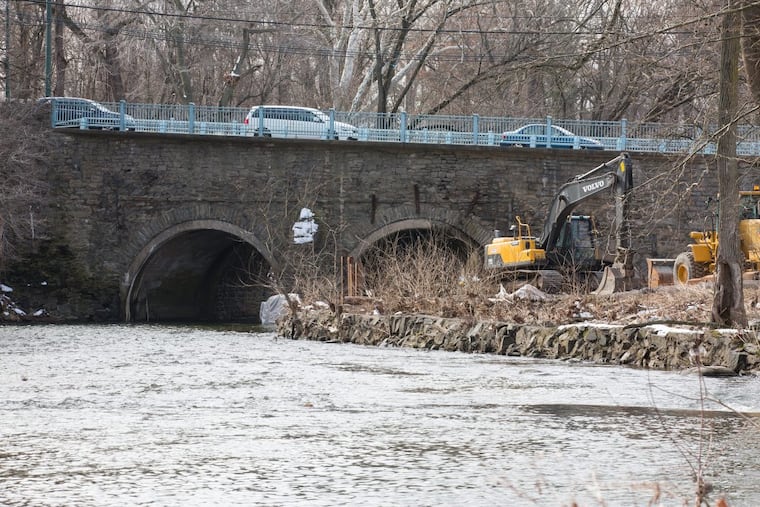A timeline of the country's oldest active stone bridge
The governing body of Pennsylvania recognized the need for a bridge over the Pennypack Creek as far back as 1682, according to records, when the creek was called the Pemacacka and Pennsylvania's entire population was about 700 people.

Pennsylvania's governing body recognized the need for a bridge over the Pennypack Creek as far back as 1682, according to state records, when the creek was called the Pemacacka and Pennsylvania's entire population of settlers was about 500 people. A year later William Penn petitioned specifically for bridges over waterways in Pennsylvania along the King's Highway, today called Frankford Avenue.
"Wee present the want of a bridge — or a ferry over Takonie, Poetuessin, Neshamaneh, and in general bridge or ferries over the whole creeks in the King's Road," Penn requested of the English Court at Upland.
Some time passed between proposal to construction, in this case about 15 years. A grist mill was built downstream of the King's Highway, probably in 1697, and historians suspect the existing bridge came with it, but there's no record confirming that. Penn wrote a friend in 1700 asking him to "urge the Justices about the bridge at Pemepecka and Poquessin, forthwith for a carriage, or I cannot come down," but the letter isn't clear on whether Penn is complaining about the poor condition of the bridge or is asking that one be built.
In 1701, there is finally a clear reference to the bridge, a record of the cost of work being done to it.
Here are a few key dates from its history:
1756: A stagecoach company advertised a speedy three-day ride to New York City on a route that would have crossed the bridge.
1789: Massachusetts delegates, including John and Samuel Adams, on their way to the first Continental Congress approach Philadelphia over the bridge.
1775: A rider crossed the bridge after a five-day journey from Boston to report the news of armed resistance to the British at Lexington, Mass.
1803: The bridge is paved by the Frankford and Bristol Turnpike Company and a toll booth added. During much of that century, the bridge was closed to traffic around 10 p.m. or midnight until 4 or 5 the next morning.
1892: The toll booth is closed and the road sold to the City of Philadelphia.
1893: A $14,750 upgrade widened the bridge to its modern 50-foot width to accommodate streetcar tracks to Bucks County. Workers added a wall, sidewalks, and raised the roadway.
1895: Trolley service begins on the bridge.
1955: Trolley service ends over the span, replaced by buses.
Sources: Fred Moore, Friends of Northeast Philadelphia History Network; PennDot; U.S. Census